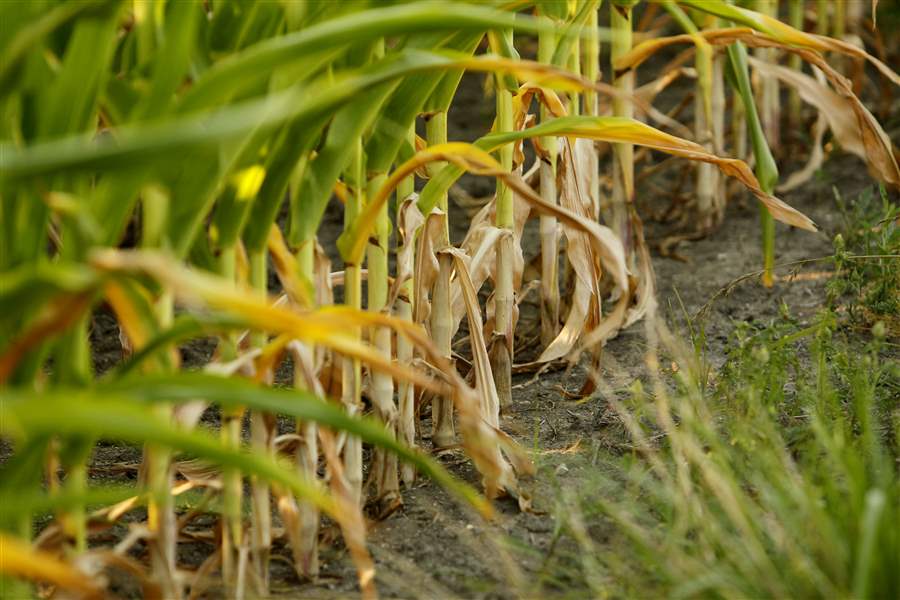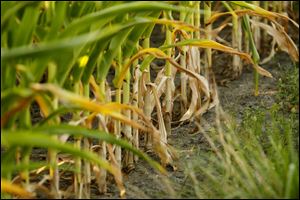
EDITORIAL
Great Lakes climate
8/20/2012
FEA Drought -- Stalks of corn along N. Fostoria Rd. near Woodville, Ohio, begin to wilt due to lack of water. ZACK CONKLE/THE BLADE
ZACK CONKLE/THE BLADE
Buy This Image

Stalks of corn near Woodville, Ohio, wilt because of a lack of rain.
A new scientific paper asserts that the Earth is warming even faster than expected. As the United States, including the Great Lakes region, endures one of the worst droughts in history, an effective strategy to address climate change requires a stronger commitment from Washington and the private sector to control greenhouse gases.
The study, whose principal author is NASA's James Hansen, blames the 2011 Texas-Oklahoma drought, the 2010 heat waves in Russia and the Middle East, and the 2003 European heat wave on human-induced greenhouse gases. The latter two disasters killed thousands of people. Mr. Hansen and his colleagues conclude that much more of Earth's land surface is covered by extreme summer heat than it was in 1980.
Click here to read more Blade editorials.
This year's drought has encompassed nearly two-thirds of the continental United States. Many scientists consider it a likely expression of climate change.
The drought was worsened by the hottest July on record, dating to 1895. A decreased corn yield this summer is leading to higher crop, meat, and fuel prices. Parched land affects water supplies; large numbers of fish are dying in some coastal areas where saltwater has seeped in.
In Ohio, groundwater that replenishes lakes will become increasingly important if the state realizes the predicted rapid growth of its drilling industry because of the use of horizontal fracturing, or fracking, of shale bedrock to produce oil and natural gas. Fracking requires tons of fresh water.
The U.S. Global Change Resource Program believes the Midwest also is particularly vulnerable to the effects of climate change because of its distance from oceans, which moderate temperatures.
Mr. Hansen, called the "godfather of global warming," is a controversial figure. His 1988 testimony to the U.S. Senate was the first from an expert witness who claimed that man-made pollution was changing the planet's climate beyond natural cycles.
He predicted then that the nation's capital would have nine days a year of high temperatures of 95 degrees or more during this decade if greenhouse gases continued to rise. This year, even before the dog days of August, Washington had 23 such days.
The connection between atmospheric pollution and land and water resources isn't always obvious. But Ohio's heavy reliance on coal-fired power plants for electricity makes it one of the nation's greatest contributors of greenhouse gases.
Even if Mr. Hansen's report and the 2012 drought fail to persuade skeptics that more must be done to respond to man-made climate change, the Great Lakes region still has to become more proactive about committing to a clean economy. It won't happen overnight, but it needs to happen.